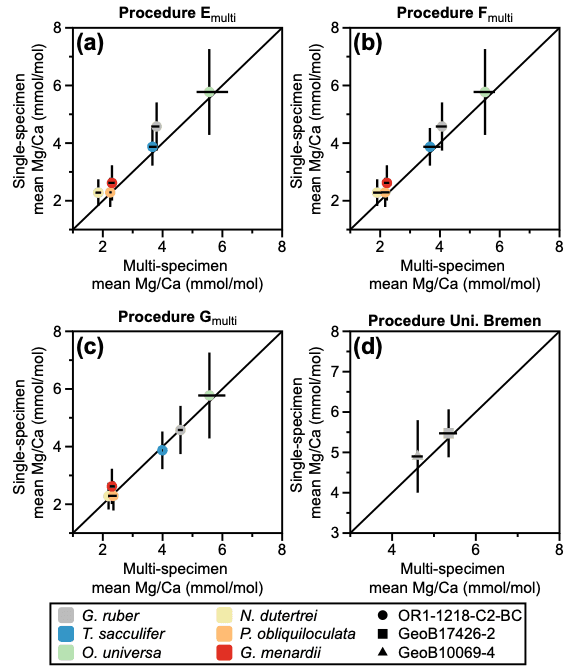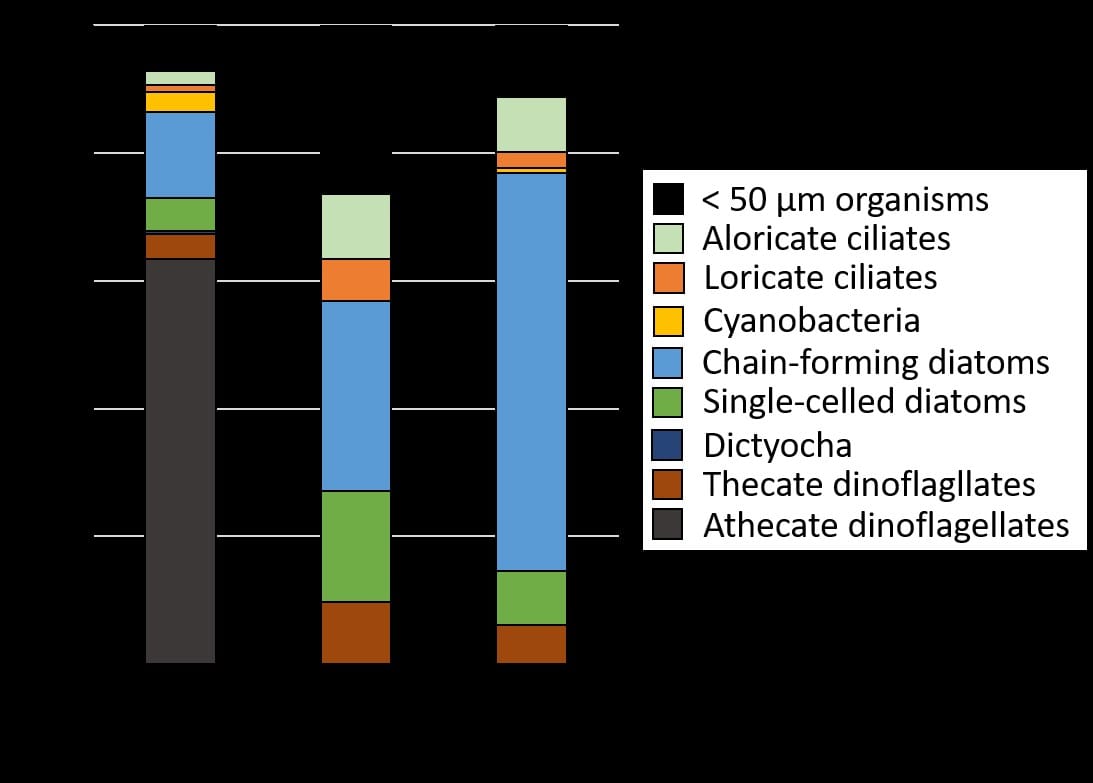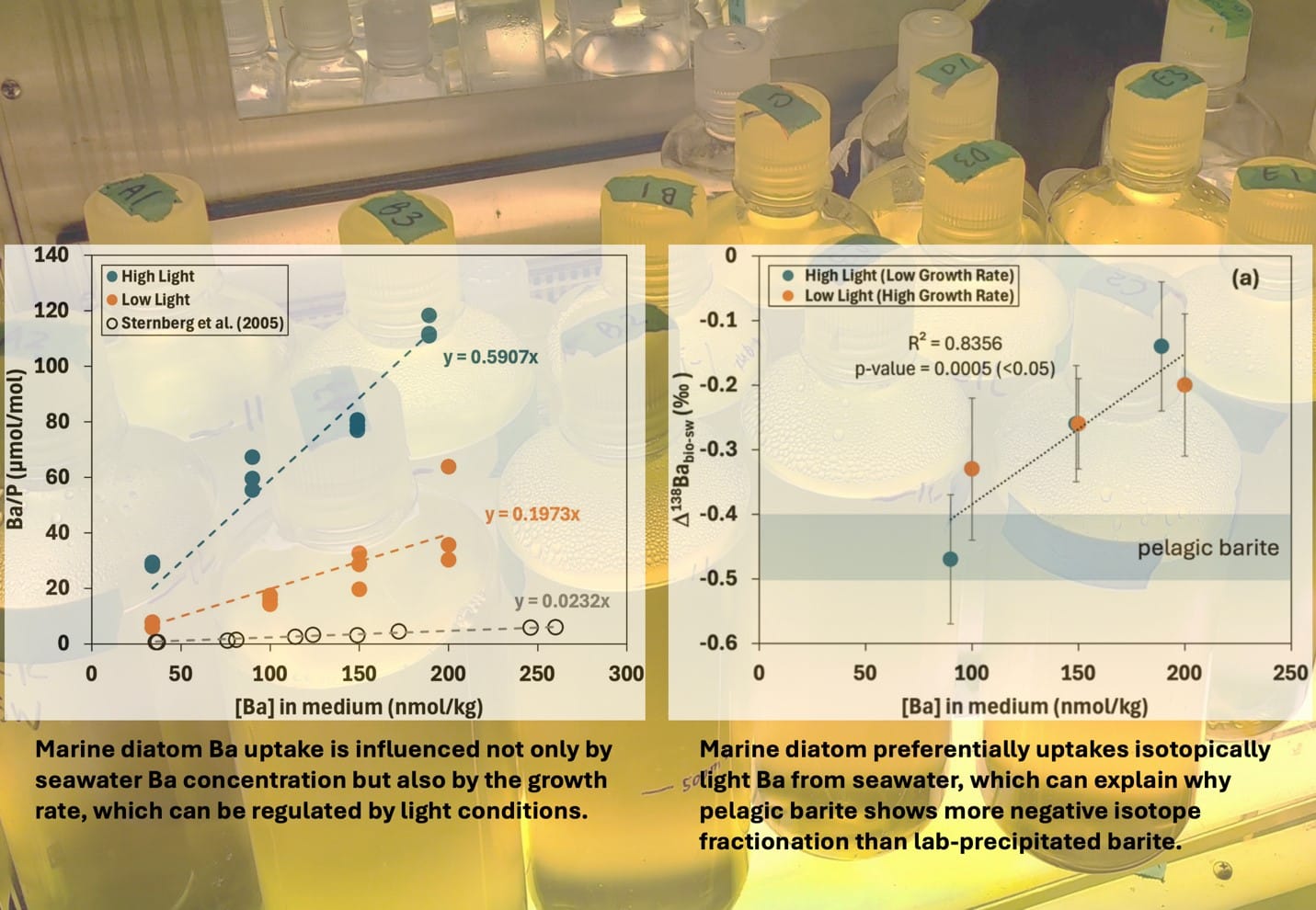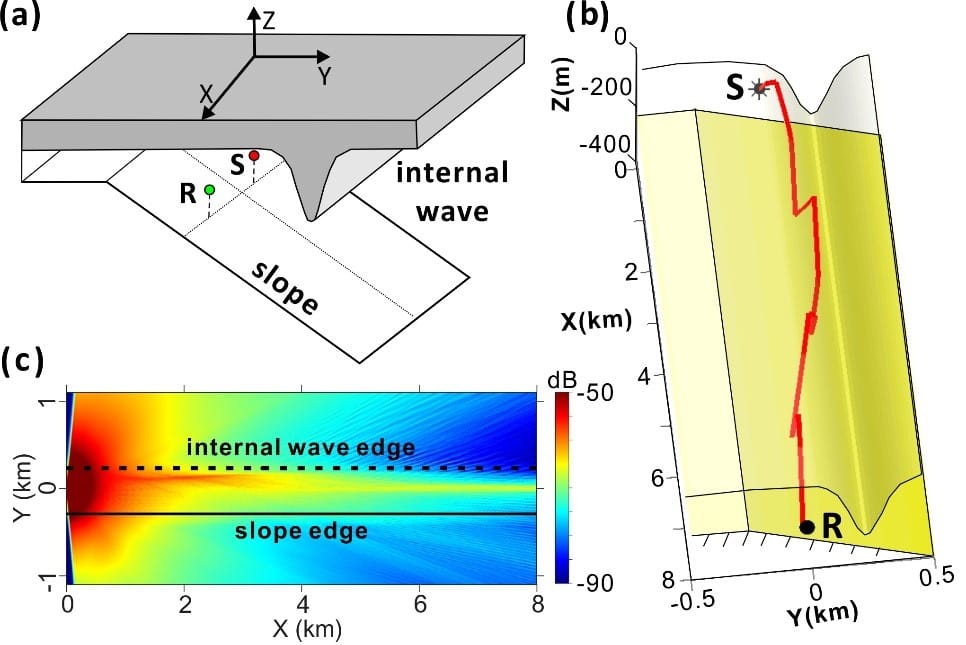Authors: Brandon M. Stephens*, Paolo Stincone, Daniel Petras, Chance J. English, Keri Opalk, Stephen Giovannoni & Craig A. Carlson
Bacterial respiration can comprise a significant fraction of oxygen consumption (50-90%) in the oceans. Based on the theoretical complete oxidation of organic matter, the amount of oxygen respired should be directly influenced by the chemical composition of the compounds consumed. This has been extensively demonstrated for the oxidation of phytoplankton biomass and bulk particulate organic matter (POM). Bacteria, being much smaller (~0.2-0.4 μm in size), are restricted to the utilization of dissolved organic matter (DOM) compounds, which are compounds smaller than <0.2 μm. DOM typically has a different chemical composition than the originating POM due to a combination of biological and physical processes. However, it has yet to be demonstrated how the chemical composition of DOM influences bacterial respiration.
This study demonstrated that bacterial respiration was directly correlated with the nominal oxidation state of carbon (NOSC) of the removed DOM. The figures to the right demonstrate that consuming a more oxidized DOM led to significantly greater oxygen consumption rates (a) and significantly lower bacterial growth efficiencies (b). These relationships can be explained based on the predicted Gibbs Free Energy of the compounds used, where more oxidized compounds provide less energy during consumption.

The oxidation state of consumed DOM was estimated based on tandem mass spectrometry analysis of DOM collected during dark remineralization experiments. The trends in the oxidation state were also supported by trends in the hydrolyzable amino acids quantified by high-performance liquid chromatography, which demonstrated that elevated consumption of amino acids was directly correlated with the consumption of more oxidized compounds. The remineralization experiments also demonstrated that partial oxidation reactions were common, influenced in part by enzymatic reactions of observed growth of bacteria OM43, SAR92, Pseudoalteromonas and Rhodobacteraceae. OM43, a common marine methylotroph, in particular may have been responsible for partially oxidizing small C1 compounds from methyl sugars which were then used by SAR92 and Pseudoalteromonas. As such, this work identified connections between the chemical composition of DOM, bacterial respiration and the bacteria community responsible for the consumption of that organic matter, with broader implications for oxygen use in the oceans.
This work was published in the Springer Nature journal Communications Biology:
BM Stephens*, P Stincone, D Petras, CJ English, K Opalk, S Giovannoni, CA Carlson. Oxidation state of bioavailable dissolved organic matter influences bacterioplankton respiration and growth efficiency. Commun Biol8, 145 (2025). https://doi.org/10.1038/s42003-025-07574-2








